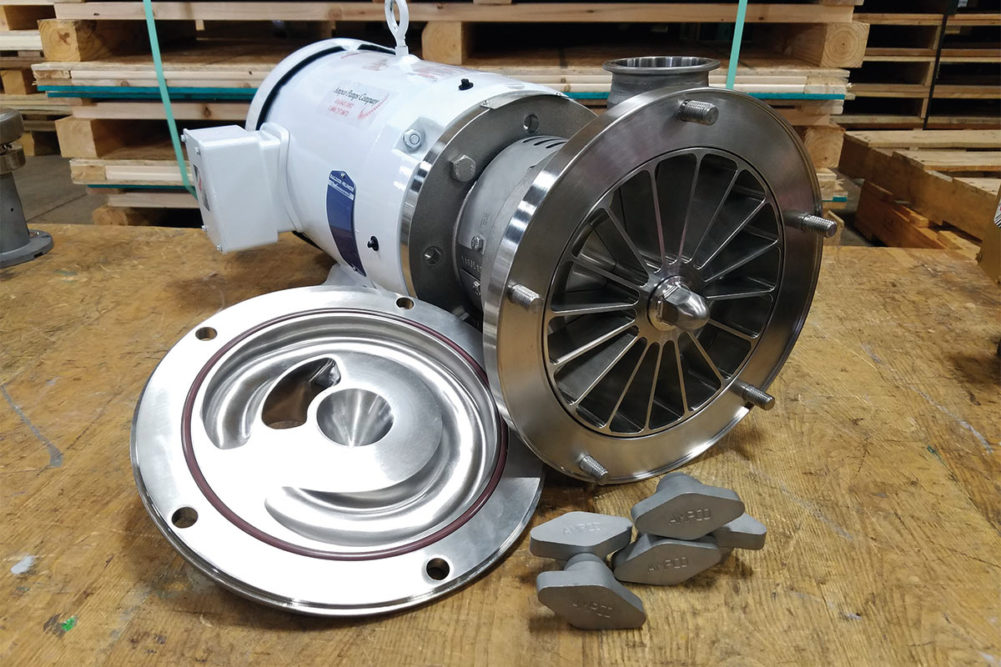Pumps are a type of equipment used to transfer raw, wet ingredients, or formulas from one stage of processing to another. Modern pumping systems are used extensively and offer pet food and treat processors the ability to keep product running smoothly from point A to point B within a facility.
Bob Garner, engineering manager, Ampco Pumps Company, Glendale, Wis., highlighted the importance of pumping applications.
“Pumps are used anytime inside a plant when you need to move product from one end to the other – from say a tank, to a heat exchanger or filling machine,” he said.
“All pet food, treat, supplement and medicine applications require some type of pumping in their pro-cessing whether it is for the formation of a shape or for the creation of a controlled weight serving por-tion to be packaged,” said Jeff Zeak, Robert Reiser & Co, Inc.
There are many types of machines that provide a pumping function, and they are used throughout the production process of pet food and treats.
“All pet food, treat, supplement and medicine applications require some type of pumping in their processing whether it is for the formation of a shape or for the creation of a controlled weight serving portion to be packaged,” explained Jeff Zeak, national development manager, bakery, Robert Reiser & Co, Inc., Canton, Mass.
Pumps are used for all different processes.
“Anything from industrial applications such as wastewater to the sanitary formulation of slurries, emulsions or ground products,” added Tom Hoffmann, director of sales, Mepaco, Beaver Dam, Wis.
Pushing forward
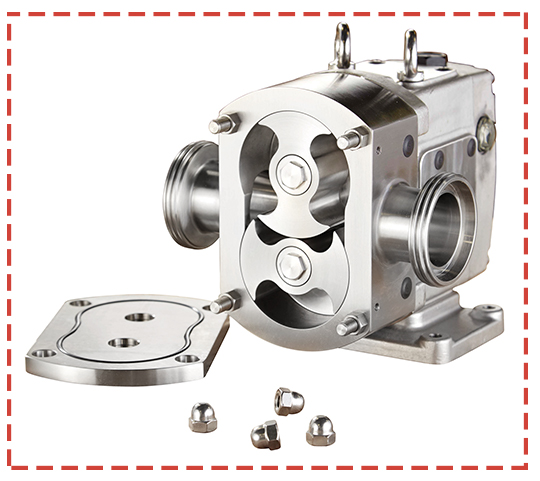
Robert Reiser & Co, Inc. is a manufacturer of vacuum extrusion dividers and stuffers that are combined with different forming and portioning attachments for pet food and treat production.
“Vacuum extrusion dividers and stuffers are used for the manufacture of pet foods and treats including dry, semi-dry, and wet food products and a variety of dry and moist treat product shapes including strips, sticks, bites, balls, and other shape varieties,” Zeak said.
Within the category of vacuum extrusion portion dividers and stuffers, there are several system options available. A traditional vacuum extrusion portion divider and stuffer will use a duo drive infeed scroll spiral (referred to as a ‘double-screw’) with vacuum suction assist in the hopper to transfer product material to either a double screw or hub vane delivery system feeding the desired forming and portioning attachment.
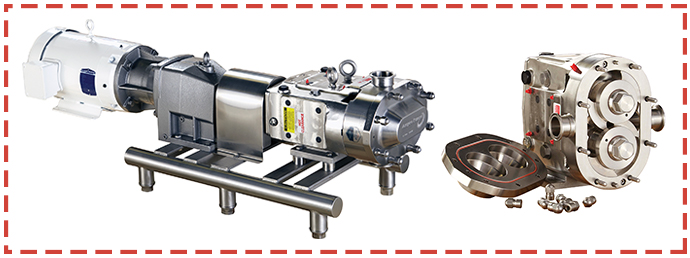
“Another option in vacuum extrusion portion dividers and stuffers is the Total Vacuum System, which uses a vacuum pump to suck the product material from a feed hopper into a closed top hopper through an adjustable inlet valve that increases the surface area of the material being pumped in order to remove entrained air,” Zeak added. “Product material is then transferred into the double screw using a duo drive infeed scroll spiral and vacuum suction assist. The double screw, available in various profile configurations, moves the product to the desired forming and portioning attachment.”
Ampco Pumps Company manufactures a variety of pumps used in the pet food processing industry.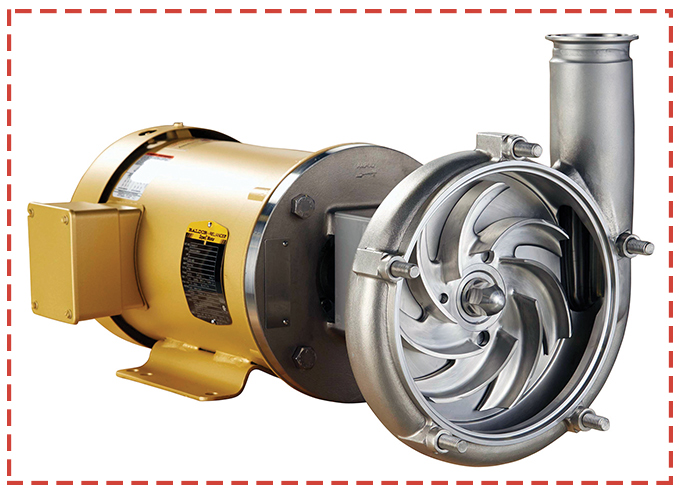
“We make two types of pumps: centrifugal pumps, which are used for low viscosity fluids such as water, milk, or anything less than 1,000 centipoises,” Garner said. “Anything over that, we make a positive displacement pump, and we have several different varieties.”
Positive displacement pumps are primarily used in the pet food industry. Pet food and treat processors may also use centrifugal pumps for their cleaning regime.
“We make positive rotary pumps and also twin-screw pumps – those handle the heavy viscous material,” Garner explained. “The twin screws will handle solids without damaging them better than a rotary pump. The downside of a twin screw is that it’s a little more expensive. If you don’t need a twin screw, a positive rotary is the pump that you would select.”
The systems Mepaco focuses on primarily utilize positive displacement style pumps.
“They are a key feature of our pumping systems,” Hoffmann said. “What we provide is a Pump Feeder that provides additional surge and while ensuring the pump remains primed at all times. Our Pump Feeders allow us to accept a full combo or batch of product that can then be delivered to the next stage in the process. We might also be capturing product from a cook line or mix line and delivering to an extruder, in-line grinder, filler or something of that nature.
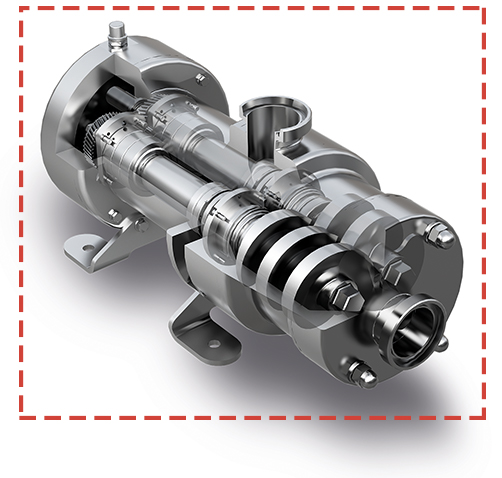
Matching pump to product
There are several features and benefits that should be considered when selecting a pumping system. Some of the most important of these include sanitation, ease of use, food safety and, of course, how the pump could impact the product and the process.
“The sanitary pumps we use on our Pump Feeders can either be cleaned-out-of-place (COP) or cleaned-in-place (CIP),” Hoffmann explained. “A lot of pet food applications we are dealing with are thick, viscous slurries and emulsions. We sometimes have to pump great distances, which generates a lot of back pressure; so, the pumps we select can handle pressures as high as 300-500 PSI while maintaining a consistent flow.”
Food safety can be improved by selecting a pumping system with a short and direct product flow path that reduces or eliminates “traps” where product can reside, accumulate and harbor bacteria, Zeak shared. Other considerations include reliability and low cost of ownership.
It’s also important for pet food and treat processors to get good information on the front end so the proper pump is selected.
“It’s vital to select the right style of pump, size of pump and speed. Proper application and maintenance are also important factors,” said Bob Garner, Ampco Pumps Company.
“Avoiding damaging the product is perhaps the biggest challenge for pet food and treat applications,” Garner explained. “For this reason, it’s vital to select the right style of pump, size of pump and speed. Proper application and maintenance are also important factors.”
On the move
In recent years, pump technology has advanced in several key areas.
“Designing food processing extrusion pump machinery with reliability, low cost of ownership, short and direct product flow path, ease of use, personal/food safety and sanitation are important factors that have evolved in pump technology in recent years,” Zeak said. “Also making assembly/disassembly easy and intuitive with toolless or minimum use of tools required. Equally important is the training of operators and sanitation staff personnel for pump machine SOP’s [standard operating procedures] and best process practices for food safety and sanitation.”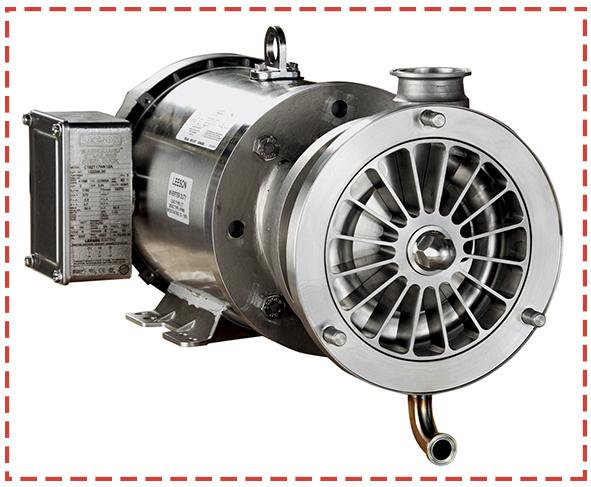
Ease of maintenance and the ability to CIP are two distinct benefits of modern pumping systems.
“In the instances where CIP is not available, we provide a system for COP that is very easy to tear down and clean,” said Hoffmann.
Garner added, “Many pumps feature a front-loading seal design. This allows the seal to be changed without having to remove the body of the pump, fittings and other components.”
Design features that offer easy assembly, disassembly and cleaning help to ensure not only safe product but the safety of the operations, sanitation and maintenance personnel; and placing a priority on employee safety offers a high return on investment.
Find more articles related to pet food processing equipment on our Equipment page.
